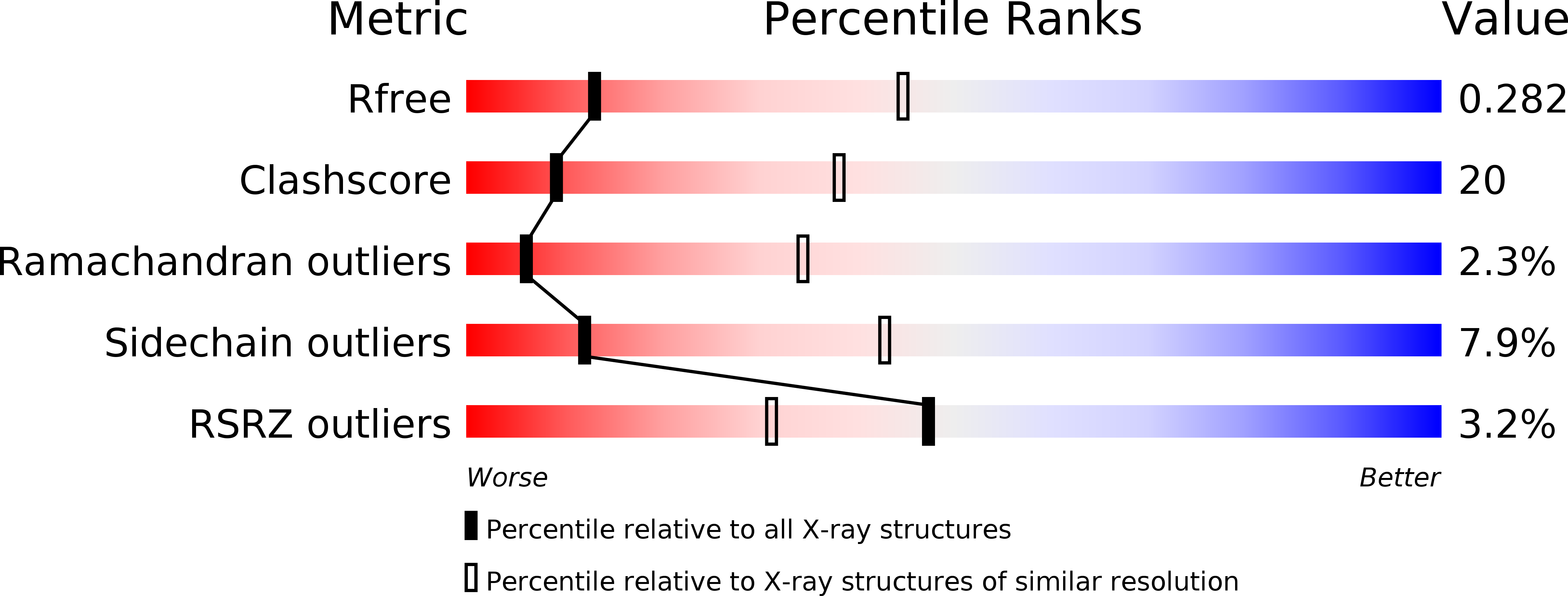
Deposition Date
2008-11-19
Release Date
2008-12-16
Last Version Date
2024-10-30
Entry Detail
PDB ID:
3FBV
Keywords:
Title:
Crystal structure of the oligomer formed by the kinase-ribonuclease domain of Ire1
Biological Source:
Source Organism:
Saccharomyces cerevisiae (Taxon ID: 559292)
Host Organism:
Method Details:
Experimental Method:
Resolution:
3.20 Å
R-Value Free:
0.28
R-Value Work:
0.23
R-Value Observed:
0.23
Space Group:
P 21 21 2


